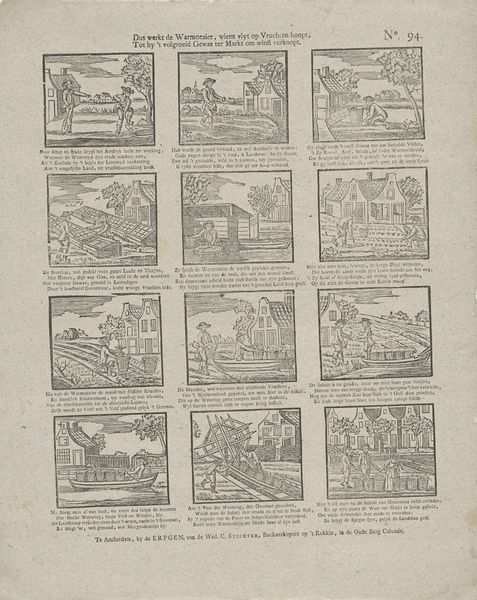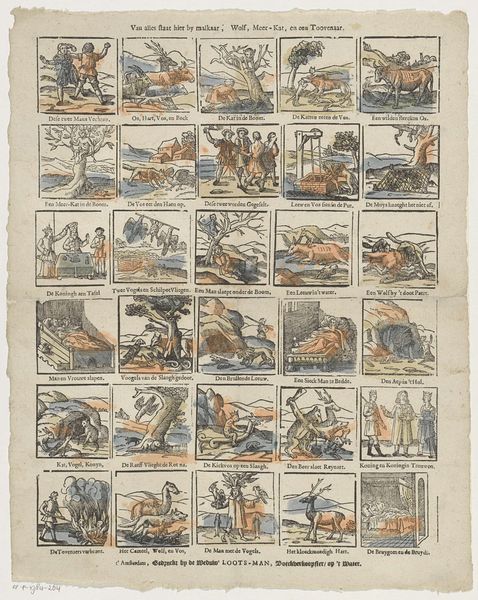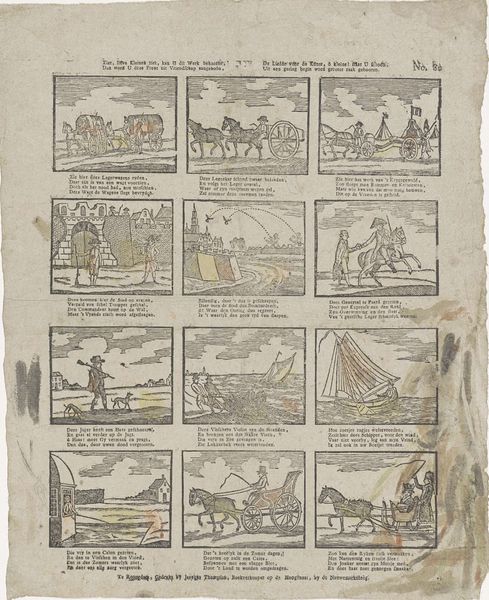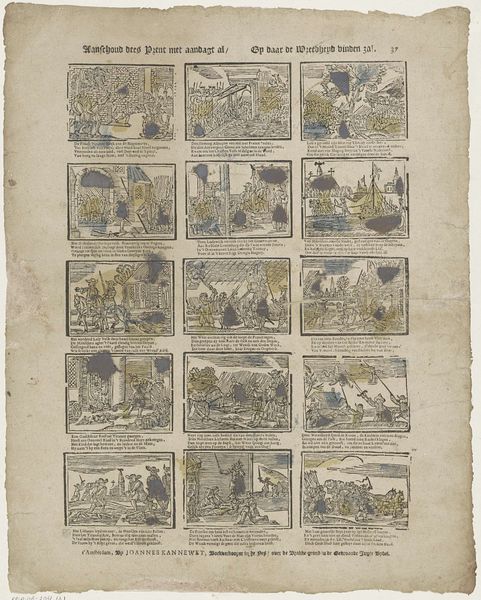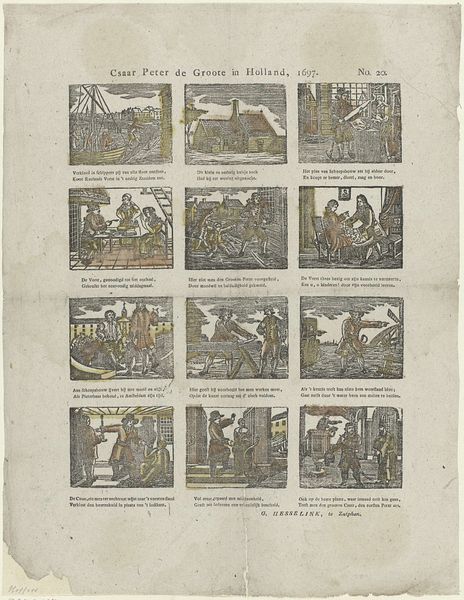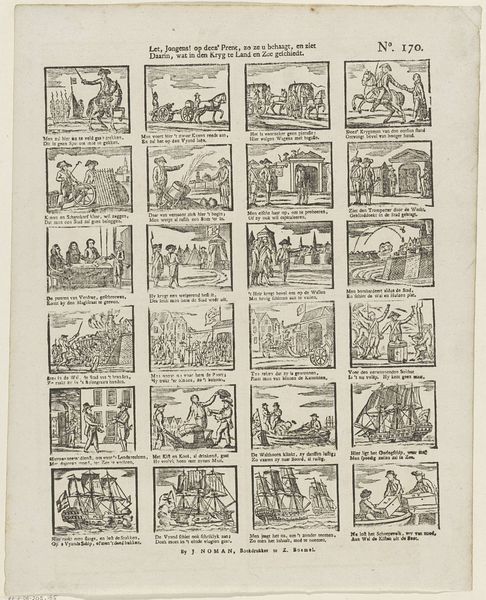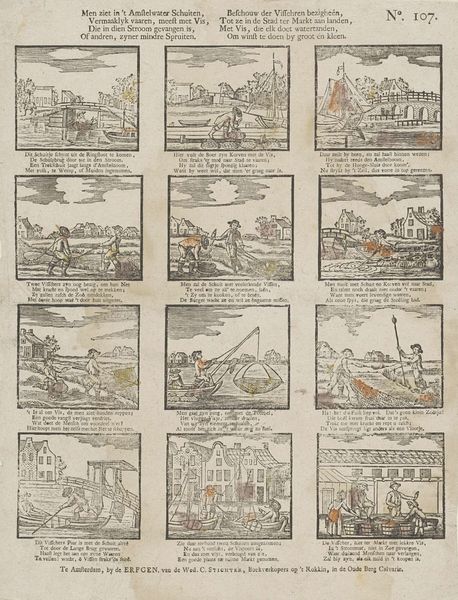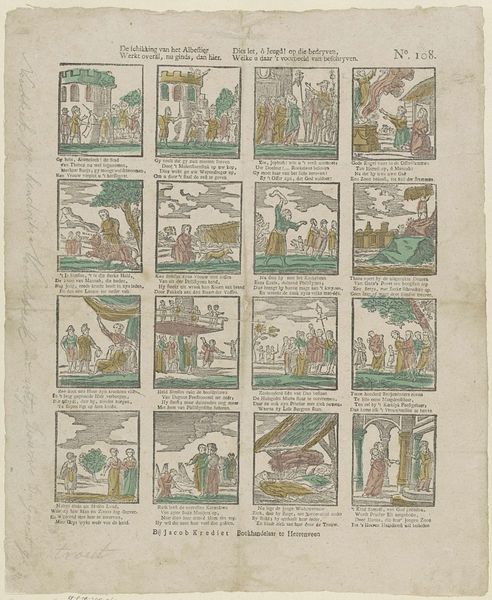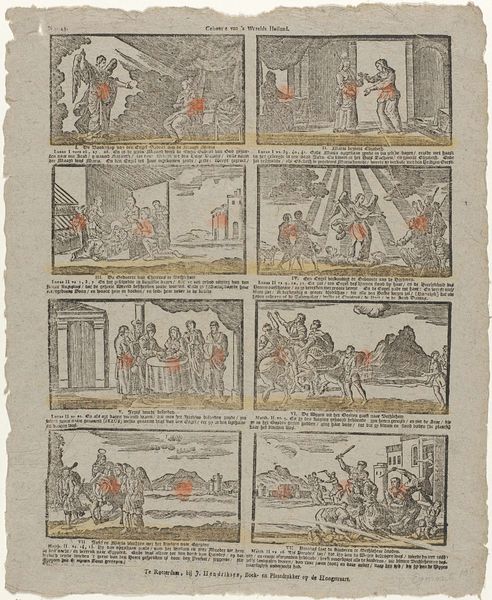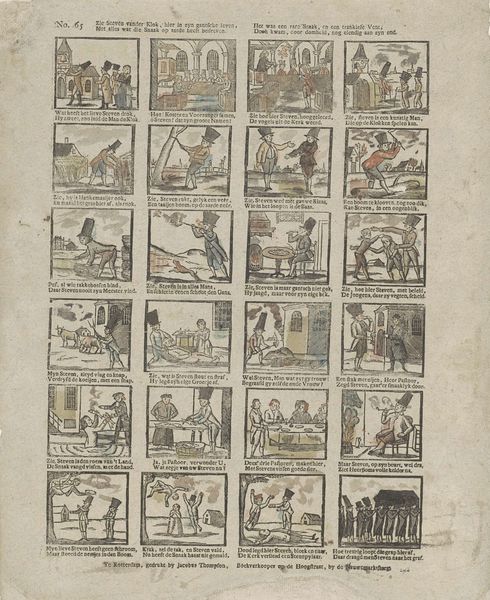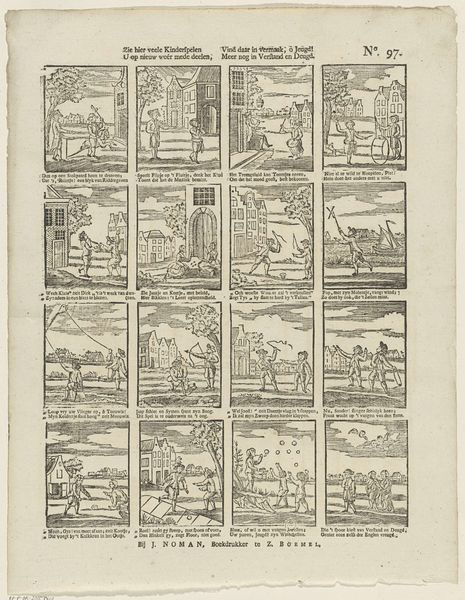
Zie hier, ô Jeugd! het lot des Levens van een Paard, / Wulpsch, moedig, trotsch, en sterk, maar strydbaar ook van aart. / Het wordt nochthans al meest tot slaverny gebooren; / Is 't oud, men slaat het dood: den vilder mag 't behooren 1715 - 1813
0:00
0:00
Dimensions: height 400 mm, width 325 mm
Copyright: Rijks Museum: Open Domain
This 18th-century print, made by the widow of Cornelis Stichter, depicts scenes from the life of a horse, and was made using etching, a printmaking technique that relies on the corrosive action of acid. The artist has used this method to create a series of vignettes showing the horse in various stages: as a foal, working the land, pulling carts, and eventually meeting its end. Each stage is rendered with a stark, unsentimental clarity, showing the horse as a commodity, exploited for labor. The linear quality of the etching lends itself well to this narrative, emphasizing the repetitive, almost mechanical nature of the horse's existence under human control. The print medium itself speaks to the social context of the era, highlighting the rise of mass production and the commodification of both labor and life. The work invites us to consider the relationship between humans and animals, and the broader implications of a society driven by utility and profit.
Comments
No comments
Be the first to comment and join the conversation on the ultimate creative platform.
